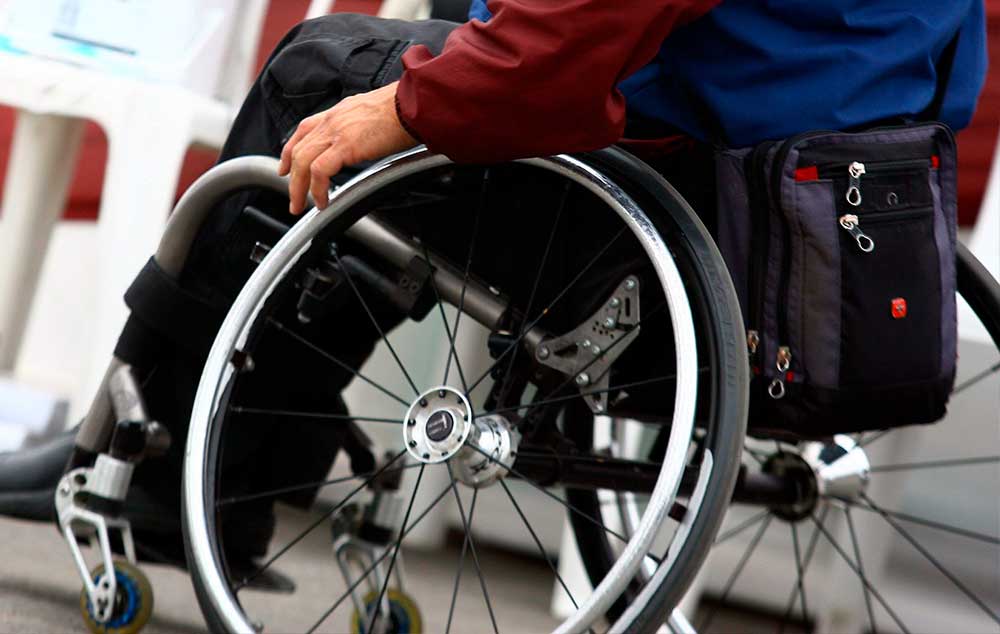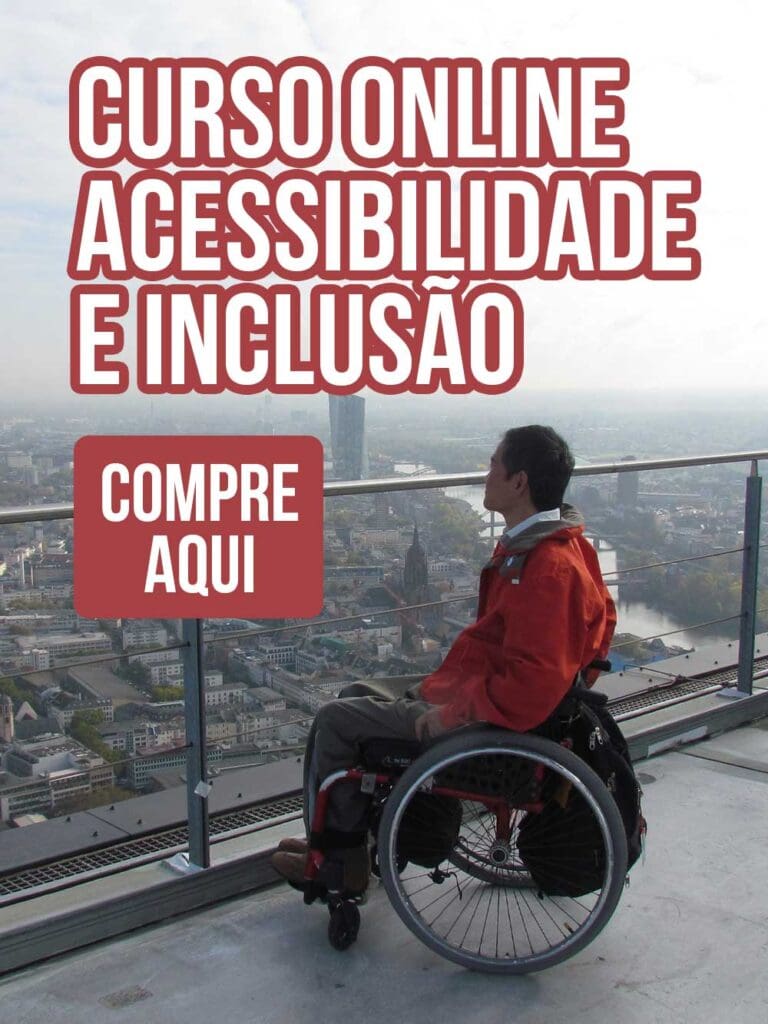Brett Heising has traveled a lot for business.
Outside of his home, the 41-year-old from Phoenix, who has cerebral palsy – a congenital disorder that limits his ability to walk – uses a wheelchair to get around. So a few years ago when he contacted a hotel in San Francisco to book rooms for himself and colleagues, he asked as a matter of routine if his room would have a roll-in shower – a type of shower that has no barrier or threshold to impede wheelchair entry.
Hotel staffers confirmed as much on numerous occasions by phone, but he arrived to find that, in fact, his room didn’t have a roll-in shower. The hotel eventually put him in a room in a sister property around the block – another ordeal in itself. Even for someone with upper body strength, the city’s famous topography was hardly conducive to getting back and forth between hotels using a manual wheelchair. “There are hills in San Francisco that you just can’t [get up] – it’s very humbling,” laughs Heising, recalling the frustration with levity. His travails led the entrepreneur to found brettapproved.com, a travel and entertainment website that focuses on the accessibility of hotels, restaurants and entertainment venues, where individuals can log on for free and check out or submit reviews on their experiences.
As Heising and other experts note, traveling can be anxiety-provoking for individuals who use a wheelchair. However, taking some simple steps can decrease travel stress and headaches – while broadening horizons.
Advance Notice
When it comes to booking a hotel, Heising suggests calling the hotel directly. Confirm that a roll-in shower is just that and not, for example, a walk-in shower, which requires stepping over a threshold and isn’t conducive to a wheelchair. Experts say frequently hotel staff don’t know the difference, so it’s important to talk to multiple people to check this. Heising goes so far as to ask if staff can take a picture of the shower – as not all roll-in showers are created equal – to make sure it will be sufficient. And confirm in advance that the hotel has a bathroom or shower wheelchair to avoid looking for one last minute to keep your chair dry. Provide your chair’s measurements to hotel staff ahead of time, too, so they can confirm bathroom entryways are wide enough to accommodate it.
“Ask lots of questions about hotel accessibility,” writes John Morris, a car accident/burn survivor, triple amputee and wheelchair user, on his blog WheelchairTravel.org.
Plan, plan, plan. Perhaps more than any other piece of advice, experts emphasize making ample time to plan logistics – booking several months in advance if possible.
For air travel, insist your wheelchair is properly stowed. One particular challenge people who use a wheelchair face when flying is having their chair – which is packed with other luggage – lost or damaged, says Zach Baldwin, director of outreach for the American Association of People with Disabilities. “You see your $9,000 wheelchair sitting down there lonely on the tarmac, and you just hope and pray the people handling that chair understand how important it is,” Heising adds. As with other aspects of travel, he takes proactive steps to talk to airline staff – including ground crew members, where possible – to articulate, in a positive way, the importance of carefully handling his wheelchair.
Keep calm and carry on removable wheelchair components. Wheelchair cushions and other removable components can come off when the chair is packed in the plane, Heising says, and get lost among other luggage in flight. “A lot of people don’t realize, the average cost of a cushion is about 400 bucks. So take the cushion off, [and] take the sideguards off,” he says, if they’re removable in the wheelchair you have. For power wheelchairs, he suggests wrapping the control module in bubble wrap before it’s stowed. Even when precautions are taken, though, accidents can happen. In cases where damaged wheelchairs don’t work properly, experts advise arranging with the airline to secure a temporary replacement until the wheelchair is fixed or replaced, as needed, at the airline’s cost.
Get a 360-degree view of where you’re going to be. Take a virtual tour and talk with real people about particulars on the ground before you arrive, whether scoping out an entertainment venue or restaurant. “I’ll use Google Maps’ “street view” to take a look at the exterior of any restaurants I haven’t dined in before,” Heising says. He calls ahead to ask about steps at the front entrance and if there’s ramp access, if needed. “Do they have valet parking? Given its convenience, I’m a huge fan of valet parking.” He also checks to make sure table seating is available in at least one section of the restaurant, since he says booths and high-top seating don’t work for him. Experts note that just as what it means to have a disability is constantly being redefined with advances in what’s possible and differences in the way individuals experience disabilities, everyone’s accessibility needs differ. So it’s important to ensure, in advance, your unique needs will be met.
Book through accessible travel agencies. Many travel agencies cater to individuals with disabilities and book accessible tours. In addition, busy travelers can hand off planning to a pro for a fee. “So if there is an issue, not only can you resolve it, but you have an ally,” Heising says; brettapproved has a travel agency that books accessible trips. Experts advise – as with any aspect of travel – talking with others who have used the service or checking online reviews before selecting a travel agency.
Go Wild
In the midst of celebrating its 100th anniversary, the National Park Service has worked to make its historic and wild spaces more accessible to people with disabilities. “Just about any new structure that we have built – a visitor’s center, a lot of trails, campgrounds … will have been built with accessible features,” says Jeremy Buzzell, chief of the national accessibility branch of the Park Service. That ranges from ramps to accessible bathrooms and water fountains to paved trails that take visitors to quintessential park viewpoints. While challenges remain from limited public transportation (particular in some rural, wilder settings) to prohibitively rugged trails that are part and parcel to certain natural landscapes, advocates have noted the improvements. “They are absolutely making an effort to make sure that parks are more accessible to people with disabilities,” Baldwin says.
Don’t rule out roughing it. For some, drinking in a miles-long postcard view may be enough. But for those who are up for a truly wild experience, Buzzell suggests staying at least one night in the great outdoors. “All across the Park Service we have campgrounds that have accessible camping units,” he notes. Higher tent pads allow individuals who can independently transfer out of a wheelchair to be able to do so safely and comfortably into a tent. Fire rings, grills and water spigots have clear space around them with a firm and stable surface so a wheelchair can approach from the front and side. “Further, they are at a height and have the kind of handles that allow someone to operate it independently even if they have limited use of their hands and arms,” Buzzell says. Picnic tables have companion seating so a person in a wheelchair can sit at the table, which is on a firm and stable surface. “There aren’t a bunch of bars in the way; it’s not too high or too low.”
When it comes to improving accessibility, seemingly small details can make a big difference. Of course, camping certainly isn’t everyone’s cup of tea. But the point, say disability travel experts, is that no matter what your bucket list entails, with planning, you can stretch yourself in rewarding ways – to ultimately go further.
Source: USNews



